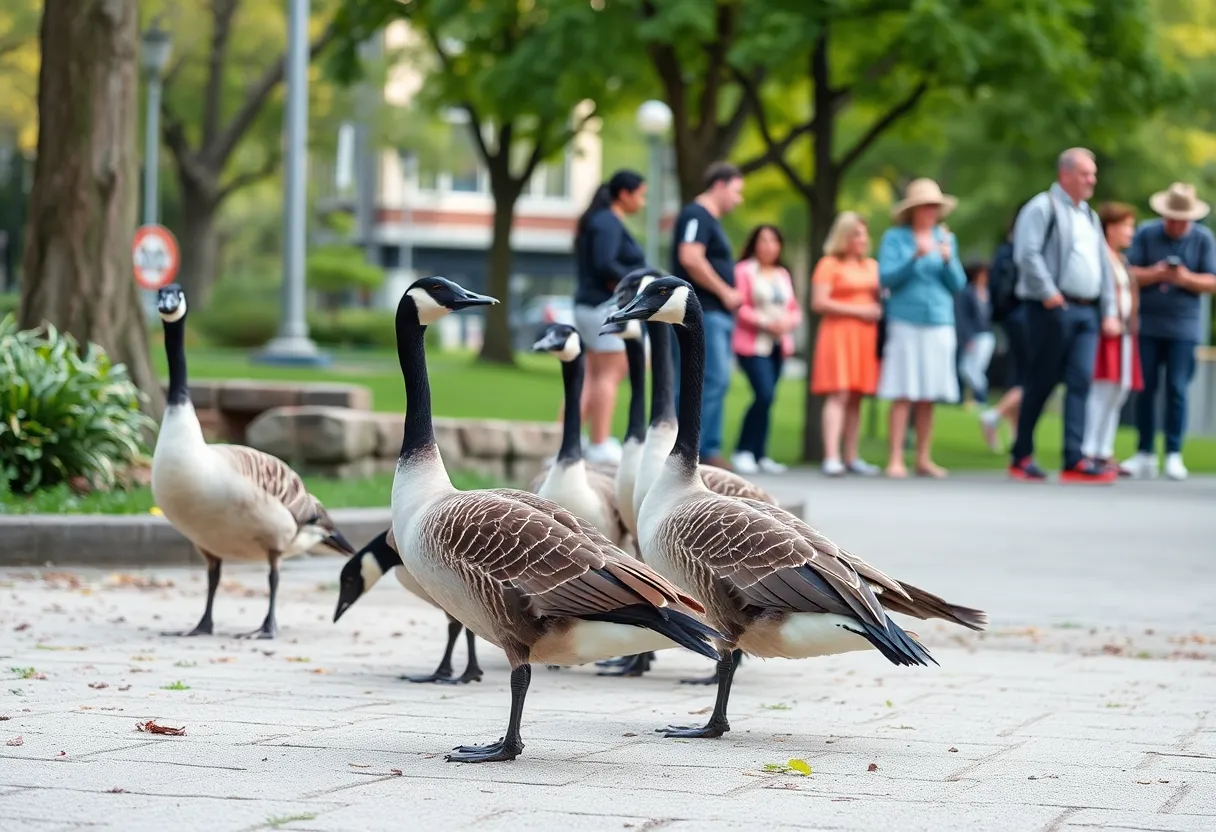

Community engagement amidst rising Canada goose populations.
The Michigan Department of Natural Resources has announced a controversial plan to euthanize troublesome Canada geese instead of relocating them. This decision follows increasing urban frustrations over goose populations, particularly as warmer weather brings more sightings. Critics argue that this method may cause distress to the birds, while the DNR seeks to balance wildlife management and human interests. Community reactions reflect a need for humane treatment and exploration of non-lethal alternatives.
Amid rising temperatures and increased interactions with wildlife, the Michigan Department of Natural Resources (DNR) has rolled out a new plan that’s stirred up quite the debate among residents and wildlife advocates alike. The agency, which oversees the management of various animal populations, has decided to gather and euthanize troublesome Canada geese instead of relocating them to sanctuaries. This decision comes in response to tensions that have been brewing between humans and geese in urban areas.
As warmer weather unfolds, many residents have noticed a surge in Canada goose sightings. Typically seen as a charming sight during family outings or brisk walks, these waddling birds have recently become a source of frustration for many. Complaints are rolling in about messy sidewalks littered with droppings and the interruption of leisure activities such as golf. The peaks in goose populations have many wondering how to effectively resolve these conflicts without resorting to drastic measures.
For over 40 years, the DNR has been experimenting with various strategies to manage conflicts between humans and Canada geese. Until now, relocating these geese has been a common practice. However, the agency has determined that this approach is not sustainable, especially given the rising number of relocations that once reached up to 10,000 annually. The DNR new approach, viewed as more viable, will permit euthanasia in situations where there are serious conflicts—though they emphasize that this is a last resort.
Another reason the DNR cites for this controversial new protocol is the growing concern surrounding avian diseases, such as the spread of bird flu. This emerging risk has heightened the stakes for managing the population of Canada geese in urban environments. The agency reassures the public that the method used for euthanizing geese involves rounding up the birds and utilizing carbon dioxide gas, a technique that is considered humane by the American Veterinary Medical Association.
Despite the DNR’s claims of a humane process, many residents and wildlife protection advocates are raising alarm bells. Critics argue that this method of euthanasia can cause unnecessary distress to the geese, suggesting that the birds may struggle before succumbing to the gas. Such emotional responses from the community have sparked a wider conversation about how to balance both human interests and the humane treatment of wildlife.
Currently, the focus remains on preventive measures before hitting that drastic euthanasia button. The DNR is implementing non-lethal techniques such as modifying habitats, hazing practices, and focusing on egg and nest destruction to mitigate conflicts. The strategy aims to create less interaction between geese and humans while upholding the welfare of the wildlife they intend to manage.
Looking ahead, the DNR plans to pilot a new program by June 2025, which will assess costs, logistics, and community interest before a full rollout in 2026. However, a unique requirement is in place: at least 70% of local residents must agree for the DNR to intervene, and there must be a minimum population of 100 geese present for that to happen.
With the current population of Canada geese soaring beyond 300,000 across the state, urban and suburban environments have become a prime habitat for these birds. Various stakeholders, including local residents and wildlife experts, are advocating for a reexamination of the DNR’s strategies. They call for prioritizing the welfare of Canada geese, urging that community voices be not only heard but valued in these wildlife management discussions.
As Michigan wades through this contentious issue, the outcome will undoubtedly influence how its urban and rural areas coexist with wildlife. The road ahead is filled with challenges, but it also holds the potential for more harmonious human-wildlife relationships if community engagement and humane treatment become the cornerstone of future policies.
News Summary Consumer sentiment in the U.S. has dropped by 2.7% in May, marking the…
News Summary Consumer Reports revealed alarming findings about Kroger overcharging its customers, with discrepancies between…
News Summary A multistate Salmonella outbreak has triggered a recall of cucumbers from Bedner Growers,…
News Summary Over 300 nursing home employees from five Ciena Healthcare facilities in Metro Detroit…
News Summary Toyota is making a bold shift into the electric vehicle market by discontinuing…
News Summary Jensen Huang, CEO of Nvidia, has labeled U.S. export controls on AI chips…